The whistle began 50 years ago, a high pitch emanating from the engine bay as the crank spun past 2500rpm. It filtered through the cabin, growing louder, more frantic beyond 3000rpm, and by then the sound was accompanied by a potency never before found in a 2-litre, four-cylinder motor. From 4000rpm, the rush toward the horizon was, frankly, shocking. The BMW turbocharger had arrived, and with it came a whole new suite of driving sensations.
Not that the concept was new. The principles of forced induction date from 1905, when the Kaiserliche Patentamt – Germany’s Imperial Patent Office – granted Swiss engineer Alfred Büchi patent number 204630 on 6 November. And the first turbocharged production car arrived in 1962, when Chevrolet unveiled the Corvair Monza just a few weeks before its sister company, Oldsmobile, presented the Jetfire. Or was it the other way round? That’s a debate for another space.

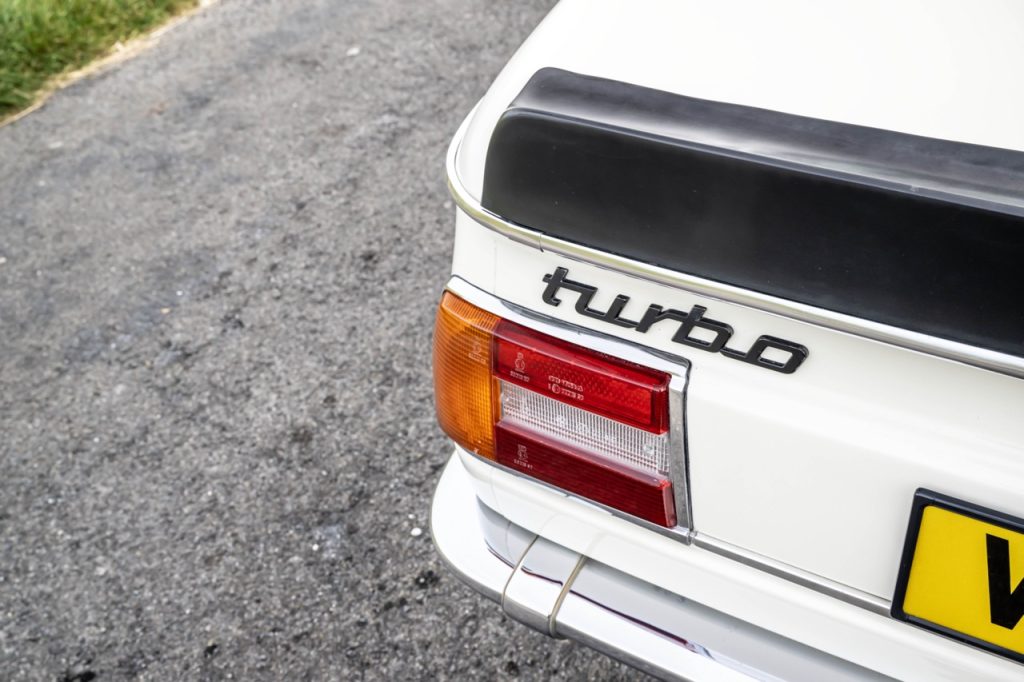
Even before its May 1973 public debut at the Frankfurt motor show, however, the BMW 2002 Turbo wasn’t entirely fresh out of the box. BMW’s turbocharged performance car had been born years before, in the minds of engineers working for the company’s racing department, who in the winter of 1968 were challenged by head of motor racing and engine development Alexander von Falkenhausen to develop a turbocharged version of the four-cylinder M10 engine.
The new technical approach was needed if BMW was to remain unbeaten in the European Touring Car Challenge. And sure enough, it paid off. The 2002 Turbo carried on from where the 2002 tii left off, ensuring the 1968 championship victory was repeated in 1969, with Austria’s Dieter Quester at the wheel.
But it took Bob Lutz, freshly arrived from Opel in 1971, to see the potential in a road-going 2002 Turbo – and to argue its case with the board. Ironically, despite this and many other achievements (notably establishing BMW M in May 1972) that transformed BMW, it would be the fallout from the 2002 Turbo program that cost Lutz his job.
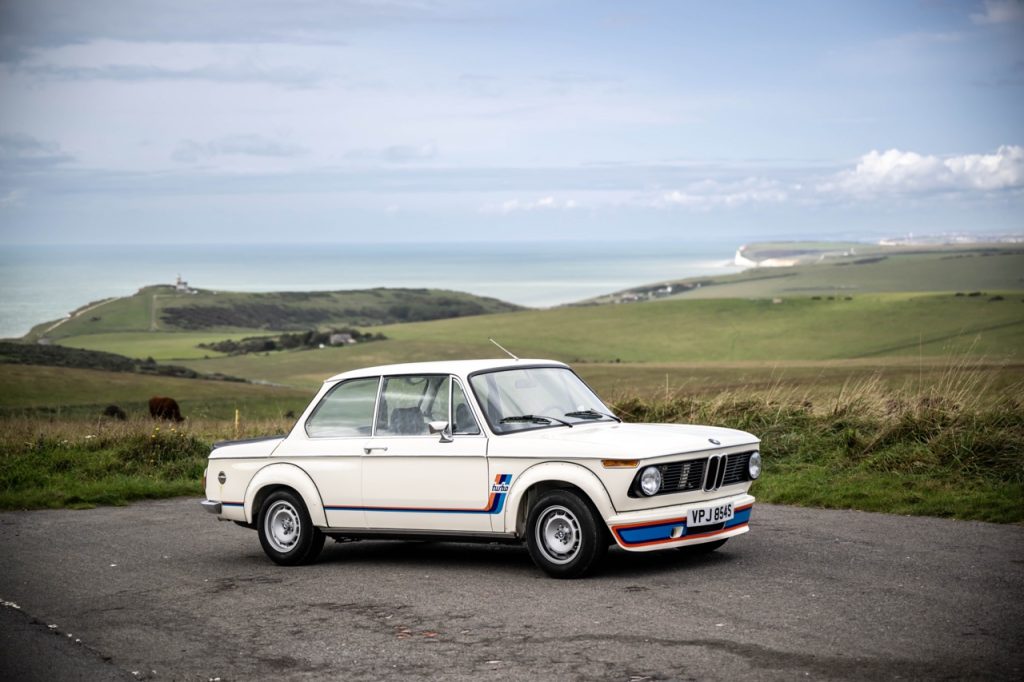
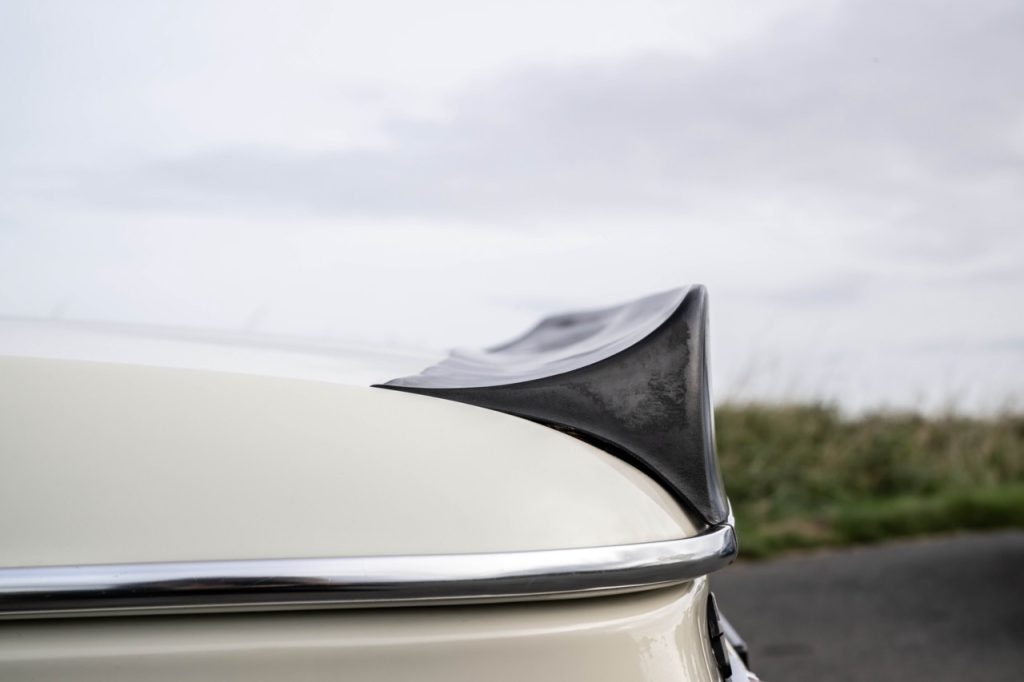
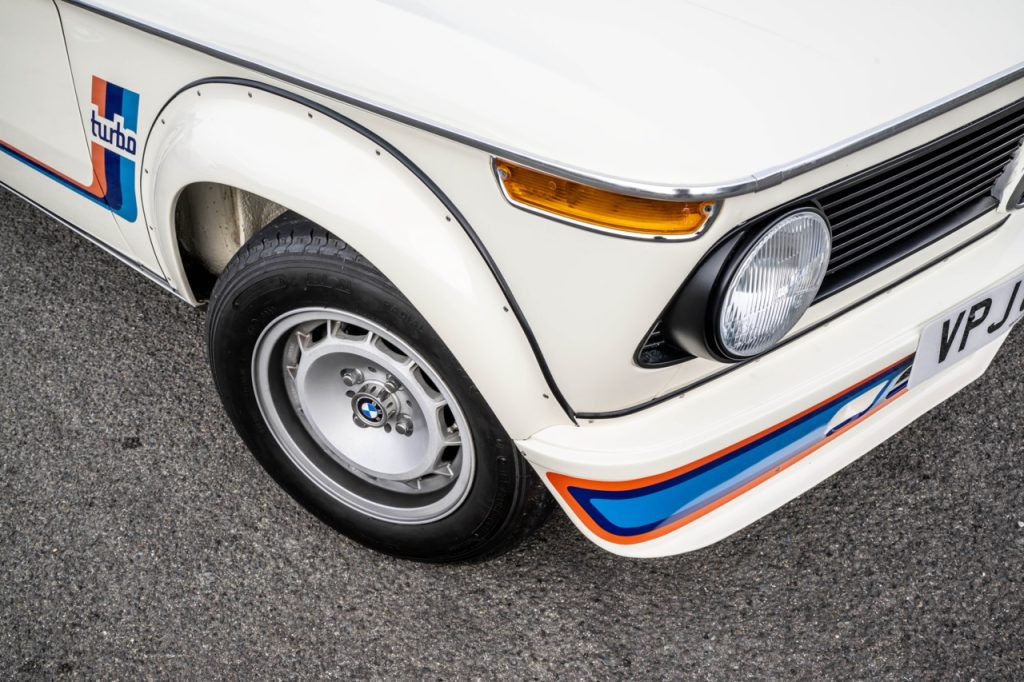
At the time of its inception, recalled Lutz writing in Road & Track, “Performance was glorified; no Autobahn speed was considered excessive.” What nobody working on the project could have foreseen was an oil crisis that saw fuel being rationed, energy use monitored, and West Germany banning driving on Sundays. “Alas,” said Lutz, “the 1973 oil crisis intervened, speed limits were imposed, and the media was quick to brand performance cars as irresponsible. BMW took large amounts of heat, and my boss effectively threw me under the bus.”
The oil crisis stopped the new 2002 Turbo in its tracks. Sales totalled 1672, with seven made in 1973, 1477 in ’74, before ending with a further 188 in ’75. By contrast, the 2002 tii, which sold alongside it, notched up 44,484 sales between 1971 and ’75.
Happily, BMW’s fondness for forced induction didn’t wane. The list of turbocharged models in its back catalogue is long – think 1M Coupe, 335i, M5, i8, M2, M4 GTS. Perhaps the ultimate expression of the technology today is the M4 CSL. So what’s changed in the 50 years that separate these two turbo tearaways? As you can imagine, rather a lot. . .
The big bang theory: Driving the 2002 Turbo
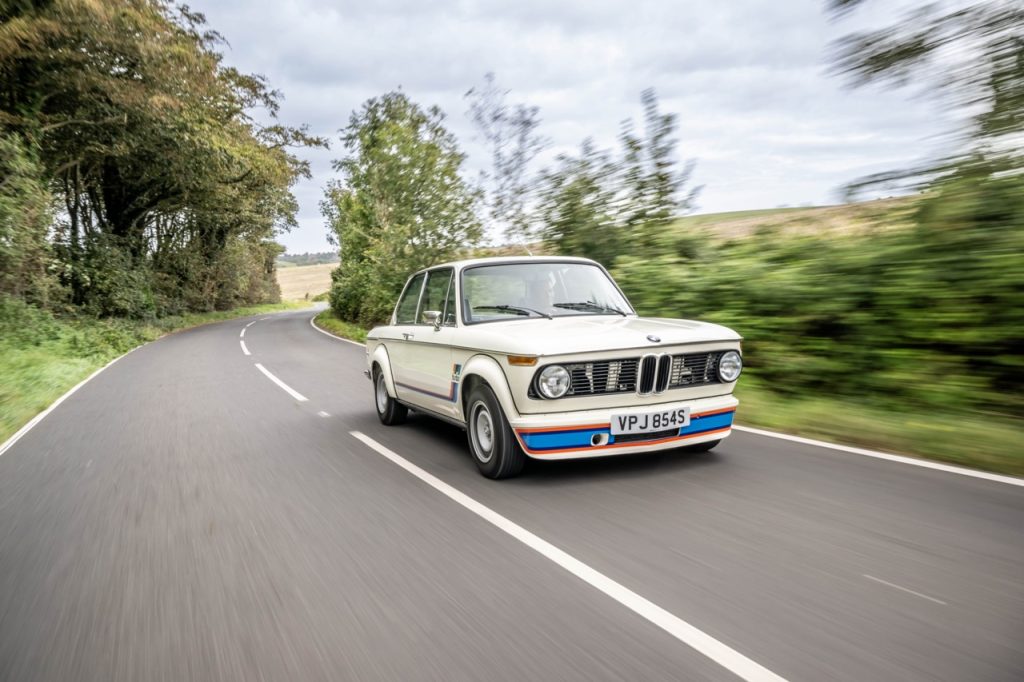
People who aren’t interested in cars are interested in the 2002 Turbo when they set eyes on it. And the petrolheads? They get visibly excited at spotting one of these rare beasts out in the open.
And rare it is. It’s difficult to know with any degree of certainty how many reside in the UK. Data sourced from the Driver and Vehicle Licensing Agency suggests it’s no more than 20, while the 02 Register tells me it’s around 40. So yes, when you do spy one in the wild, it’s a very big ‘tick’ in your copy of The Classic Car Spotters’ Guide.
It’s a small car, but not comically so. And the basic three-box proportions, with its generous glasshouse on top and its prominent front end, proved hugely influential for BMW. It “influences everything we do,” BMW Group design chief Adrian van Hooydonk has said of the 2002. You can see why. This is where the fundamentals of BMW’s design as we know it came together: the canted sharknose, the beltline running around the car, the Hofmeister kink.
But the Turbo takes things to a slightly sinister place, and its racing inspiration is obvious: those riveted wheel arch extensions, the deep front air dam, the BMW M motorsport colours, first featured on the ’73 3.0 CSL. The colour scheme was the work of BMW designer Wolfgang Seehaus, who brought together BMW’s signature Bavarian blue, red from the company’s proposed motorsport partnership with Texaco, and violet said to be a mix of the two. Combined with the turbo script – which, incidentally, was reversed on the air dam on early cars, causing moral outrage amongst certain corners of the media – it has to be one of the most stylistically successful uses of graphics on a performance car.
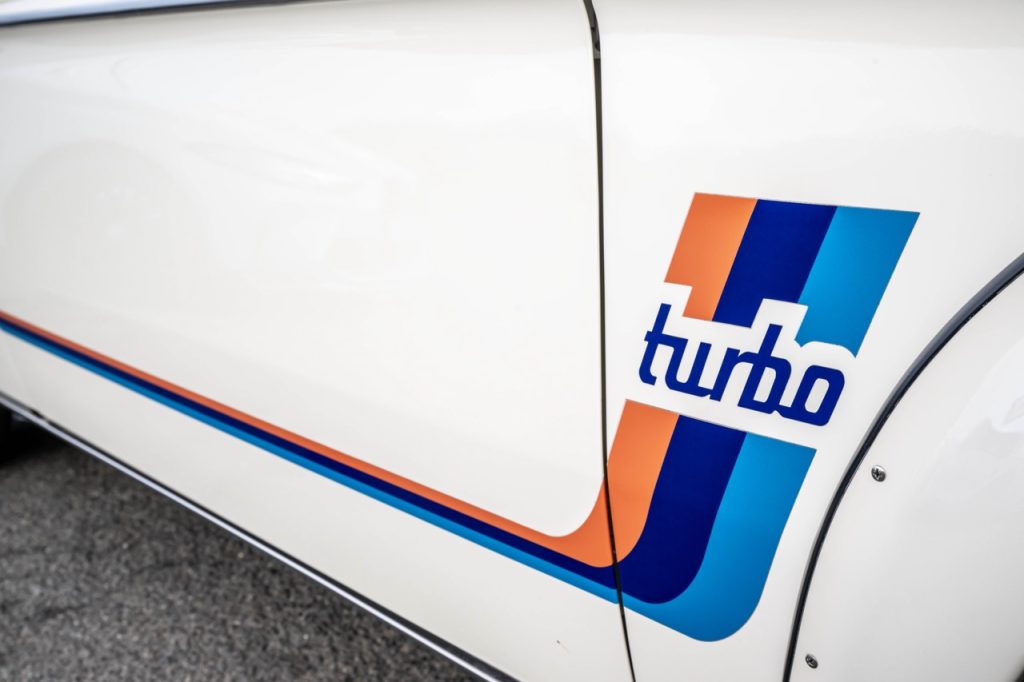
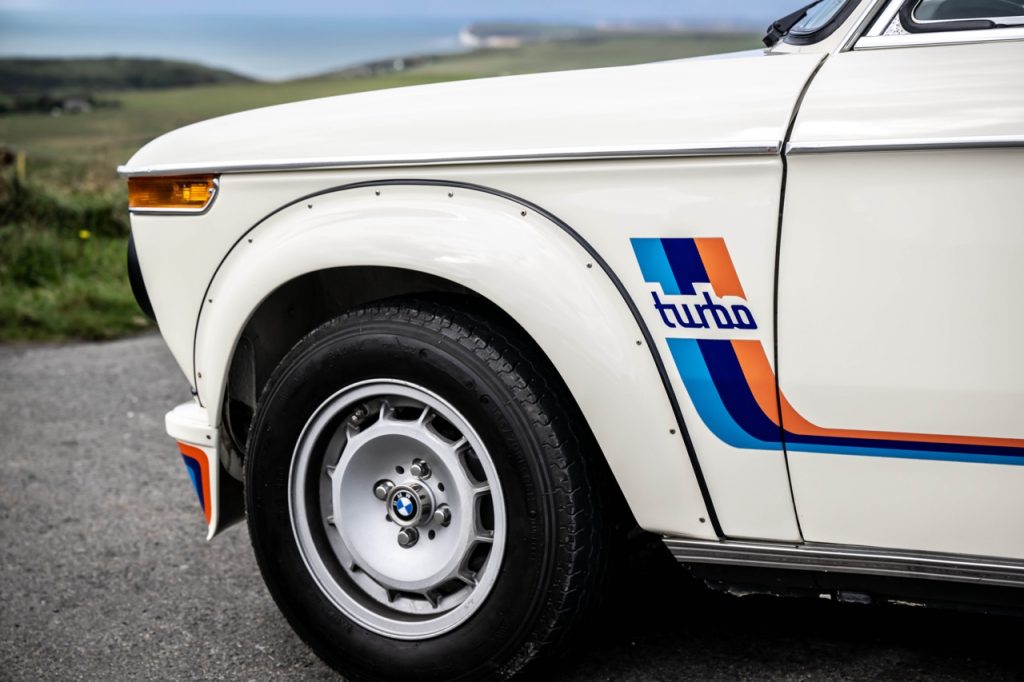
Grasp the nearside chrome door handle (all Turbos were left-hand drive, supposedly, said BMW, because the steering box on right-hand-drive prototypes got too hot), squeeze the button, and a couple of things immediately strike you. The Rentrop bucket seats look as petite and of-the-period as the rest of the 2002 package, and the floor-hinged pedals look like they’ll be awkward – but prove nicely arranged in use. With the generous glasshouse, it’s an airy four-seat environment, and the good-size boot makes it a useable classic.
A VDO boost gauge sits next to the clock in a simple pod, adjacent to the instrument cluster, while a red insert, sports steering wheel, and the grip of those Rentrops is all there is to mark out the Turbo from lesser siblings.
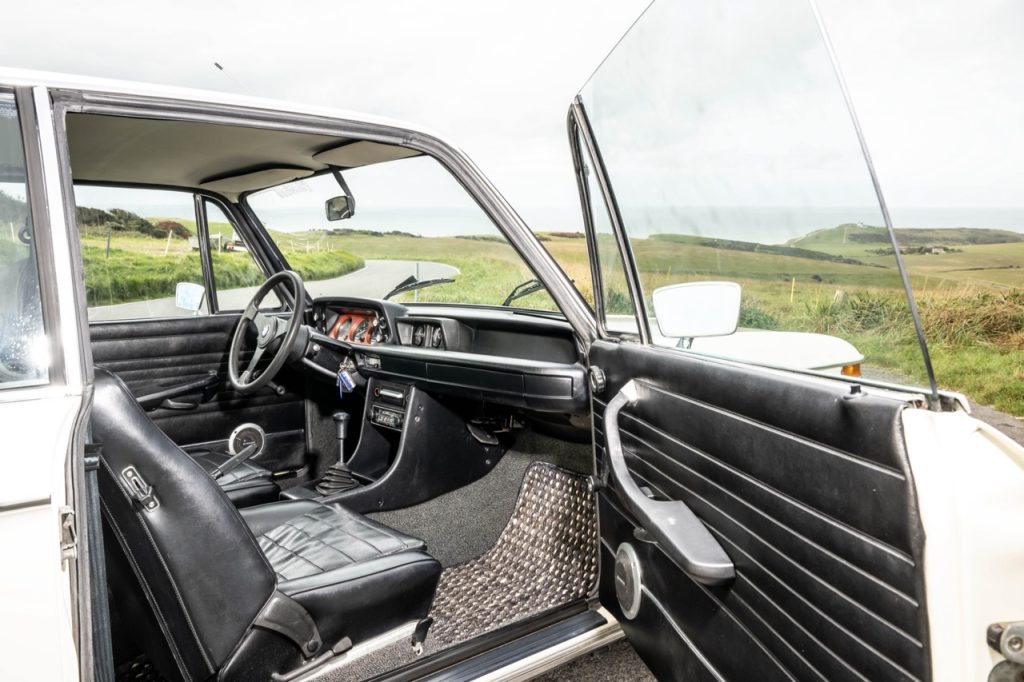
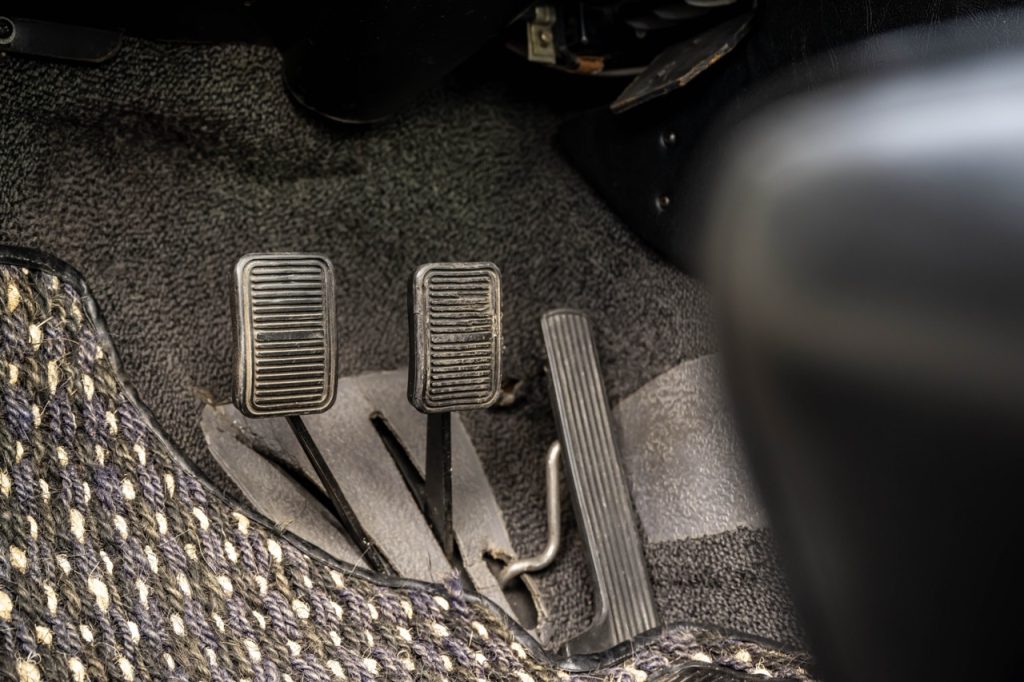
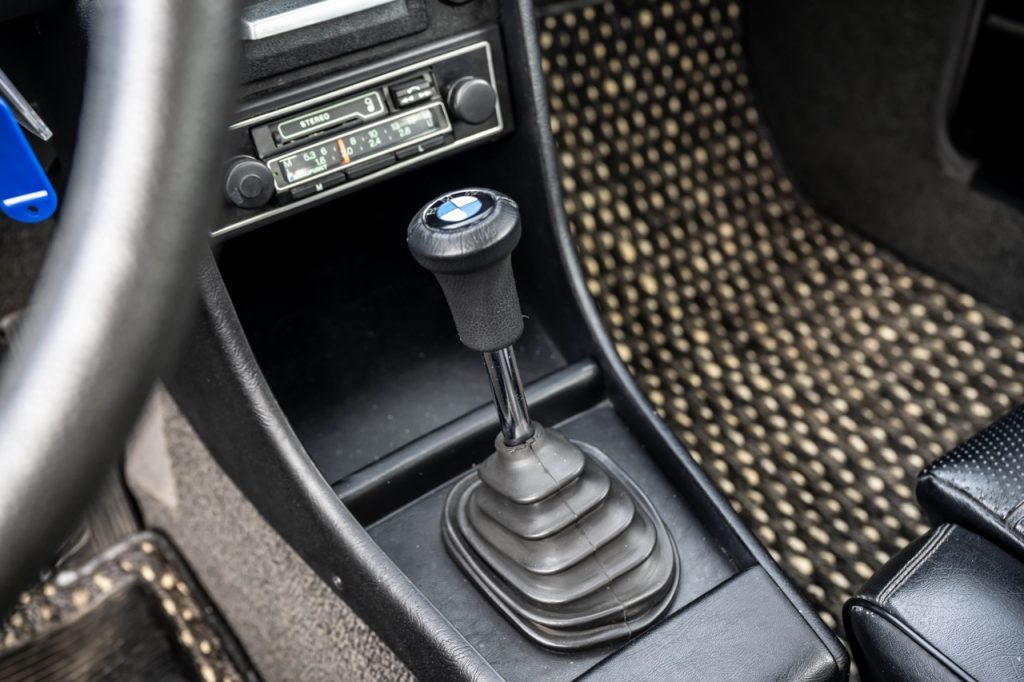
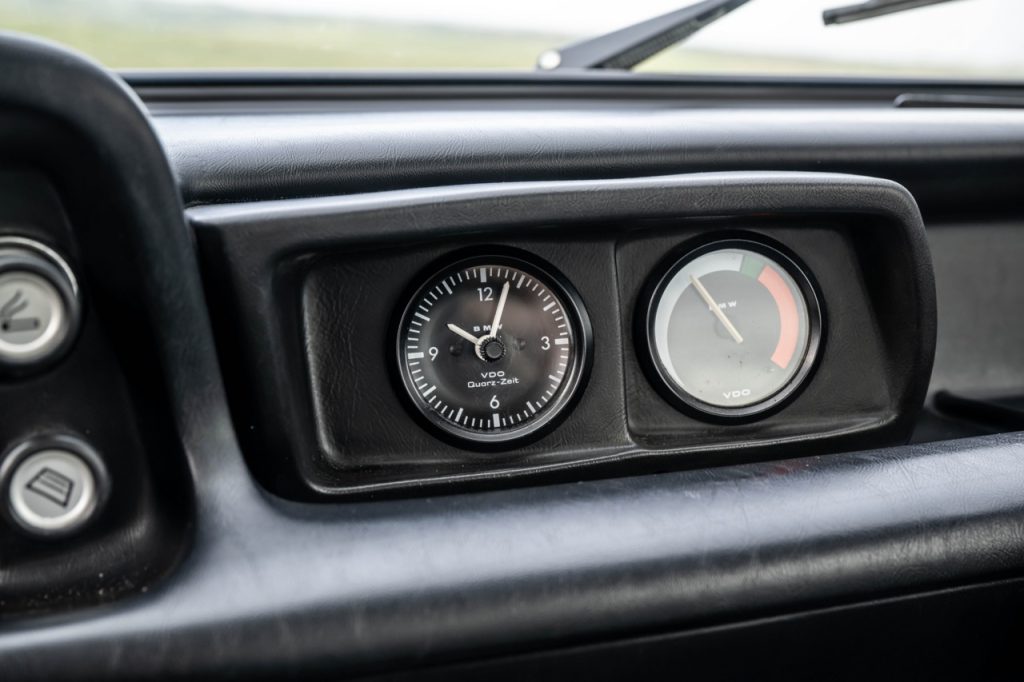
With a helping prod of the throttle, the 2-litre, overhead-cam four-cylinder catches, splutters, and then attempts to settle to an idle. I say attempts, as the Kugelfischer mechanical fuel-injected unit of BMW GB’s car hunts around, rising and falling until you intervene and help steady it with another quick prod.
Where the 2002 tii’s engine makes 130 horsepower, at 5800rpm this one musters 170, with 177Ib ft of torque available at 4000rpm (versus 131Ib ft at 4500rpm for the tii), courtesy of a KKK (Kühnle, Kopp & Kausch) turbocharger. The M10 four-pot isn’t the smoothest of motors, grumbling away so much you feel it through the soles of your feet, but you stop caring about that once you get underway, boost begins to build, and the car beneath you starts to whistle.
There’s a delicious sense of the slow-burn working up to the big bang as you climb through the rev range. You feel like a child riding on a cup and saucer fairground ride that attendants would spin up to speed. The irony is that the characteristics that make it such a tonic to today’s modern turbocharged cars – which have flat torque curves and boost from little more than idle speeds – are what critics panned back in the day.
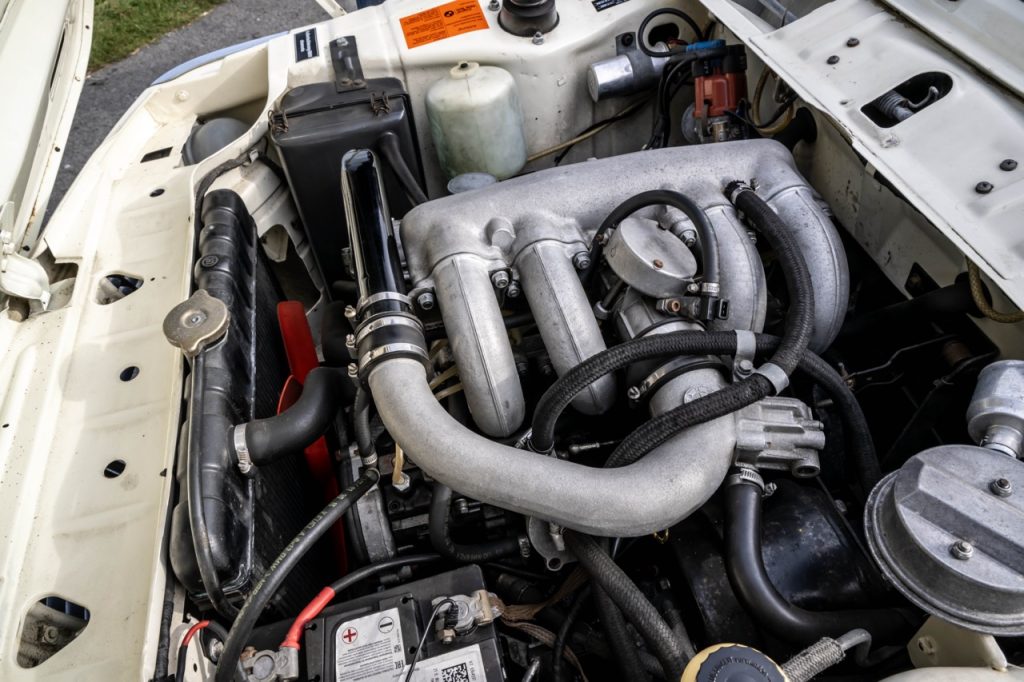
The shock is just how quick the Turbo is when that VDO gauge sweeps into the green area. This is a brisk car from 3000rpm, and by 4000rpm it squats its tail and surges forward with a rabid turn of speed that is hard to equate with a family saloon of the early ‘70s. BMW quoted a top speed of 131mph, with the 1080kg Turbo accelerating from 0 to 60mph in 6.9 seconds. That feels entirely plausible from the driver’s seat today, though back in ‘74 Autocar recorded 0–60mph in 7.3 seconds.
At this point I so want to say that the rest of the package can keep up, but, well, it can’t. The worm-and-roller steering is not the most direct, so it’s pleasing to find it is full of feel when loaded up in a bend, but the general sense of unease displayed by the suspension and brakes ultimately dictates how fast you’re prepared to travel by 2002 Turbo – at least, it does in BMW GB’s car, which emerged from restoration in 2016.
Find a smooth, well-sighted corner or two, and you can play around with the car’s balance with confidence, simply because its steering is so communicative under load. But when you don’t have that view of the road ahead, the doubts over the suspension’s ability to cope with patchy, pock-marked roads – especially when they undulate and compress – along with the stopping power of the brakes, mean you treat the Turbo with appropriate respect.
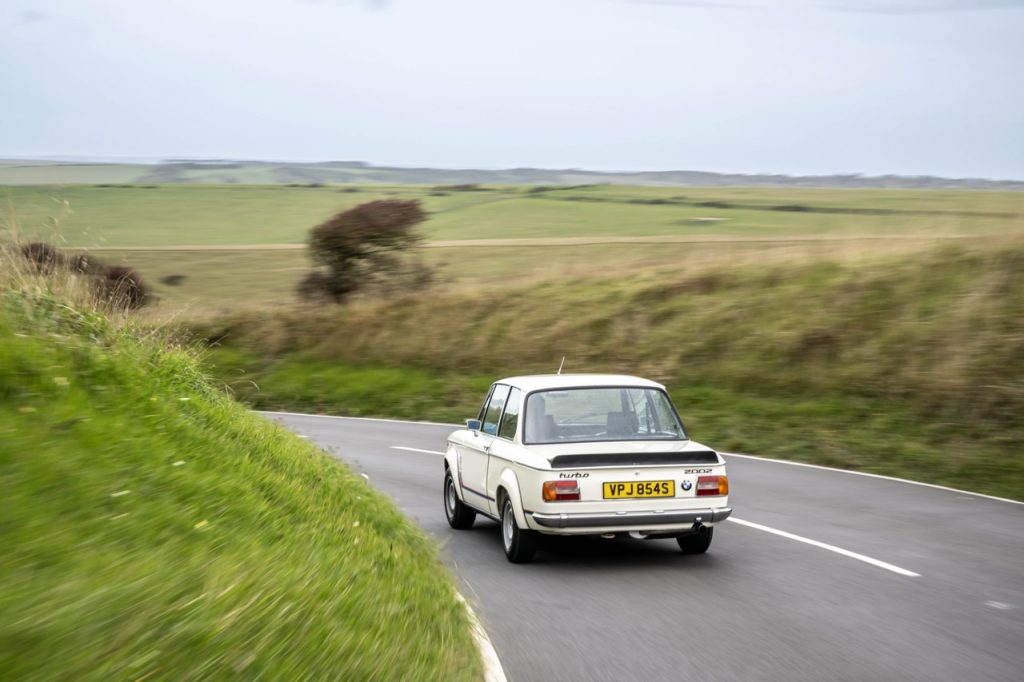
This example features the rare, optional five-speed gearbox, a dogleg that has a loose, languid shift quality. In the dry, the car’s traction with its limited-slip differential is impressive. In the wet? I didn’t get to find out, but contemporary reports would have you believe it could be, er, challenging.
In BMW M, Tony Lewin’s tribute to 50 years of BMW M and its cars, the cause of the car’s turbo lag is attributed to a lack of electronic controls for fuelling and boost. “BMW engineers had to specify low (6.9:1) compression pistons to avoid damaging preignition at higher revs when the turbo began to deliver boost. This made the car sluggish at low engine speeds, which encouraged the driver to press the throttle pedal harder to gain speed.” All too often, this was happening as a driver tried to power out of a corner, and the results were often, well, upsetting.
Surging along in third or fourth gear is where the Turbo feels most satisfying. Timing the boost so that you can power away from a bend becomes an art form in itself. Drivers of modern cars are doubtless a little surprised when the cute quinquagenarian powers past them, much like being dropped by a visibly older cyclist.
With a little work down below, I suspect this example of what is arguably BMW’s first M car could be turned into a little belter, one that complements that firecracker of an engine. Regardless, it is a machine that holds considerable significance, not just for BMW but for the wider car industry. It marks a turning point in the evolution of the performance car, where drivers craving a new experience would find stimulation in the form of the turbo rush.
Under pressure: Driving the M4 CSL
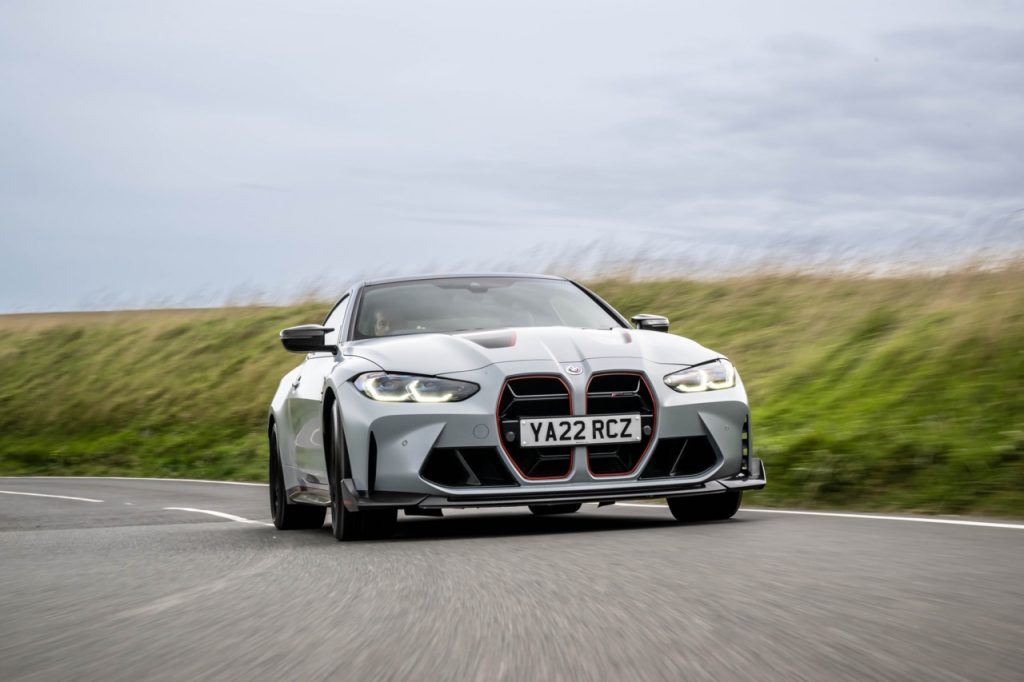
It is somewhat ironic that in the five decades since the 2002 Turbo arrived, our roads have gotten more crowded than ever, the surfaces are crumbling to bits, national speed limits seem to be disappearing from many stretches, and speed cameras of varying levels of sophistication are waiting to greet drivers who stray above the legal limit. Yet the BMW M4 CSL is another example of how carmakers choose to ignore all this and build cars that are bigger, heavier, faster, and more expensive than ever.
Still, as car enthusiasts we should be thankful that cars like the M4 CSL are allowed to exist.
Its name, Coupé Sport Leichtbau – Coupé Sport Lightweight – carries forward a badge that first appeared on the 1971 3.0 CSL, the motor racing homologation model that would underpin significant success for the German brand in the European Touring Car Challenge. The badge returned to the road in 2003 with the acclaimed M3 CSL, albeit without any motorsport duties. Then, last spring, the dust sheet was pulled from the new M4 CSL.
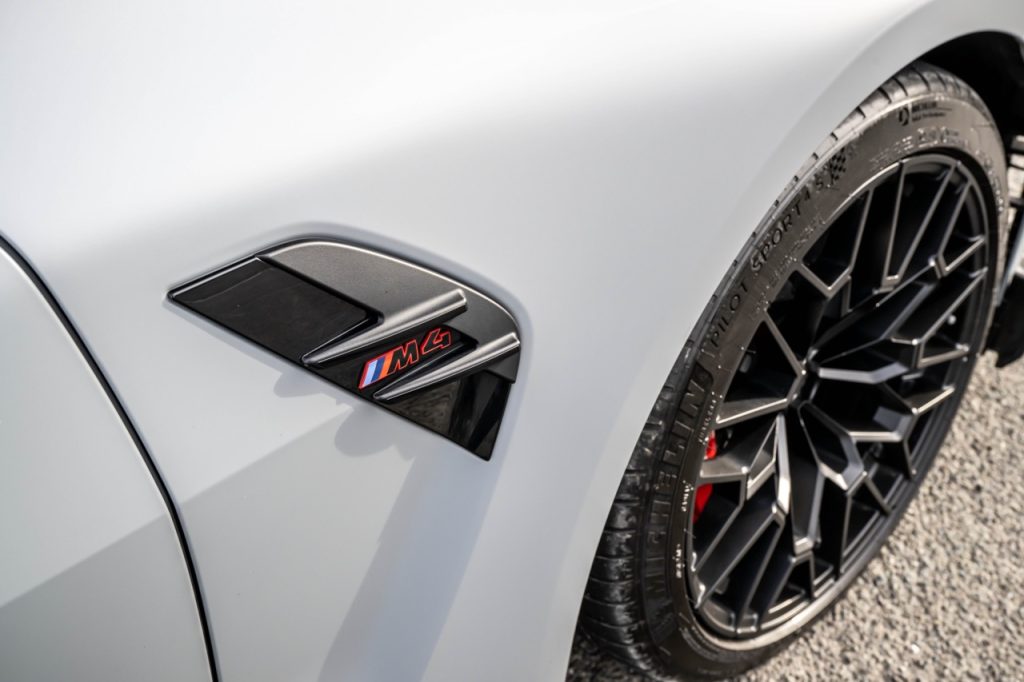
It promises to be a rarer sight still than the old timer, because BMW will only build 1000 of them, 100 of which were allocated to the UK, for the sum of £128,820. That may sound like a lot of money, but have you seen the price of a good example of a 2002 Turbo, lately? It is comfortably more than £100,000, according to the Hagerty Price Guide.
So what progress has been made since the days of the 2002 Turbo? Well, the sheer speed of the CSL is staggering. It is so gut-wrenchingly fast that you’ll be thankful it comes with just the one passenger seat; if there were four seats in the thing, you’d have four people turning the air blue with their language.
The 1625kg CSL can lunge down the road with a turn of speed that rivals more exotic supercars. From 2000rpm its twin-turbo, 3-litre straight-six engine is hauling hard, and from 2500rpm it is flying. That’s because its 479Ib ft of torque is all available between 2750 and 5950rpm, and to be brutally honest, from any point after 2500rpm the car is so quickly able to exceed any of our speed limits that the best place to stretch its legs is at a circuit – as we did when comparing it with the E46 M3 CSL last year.
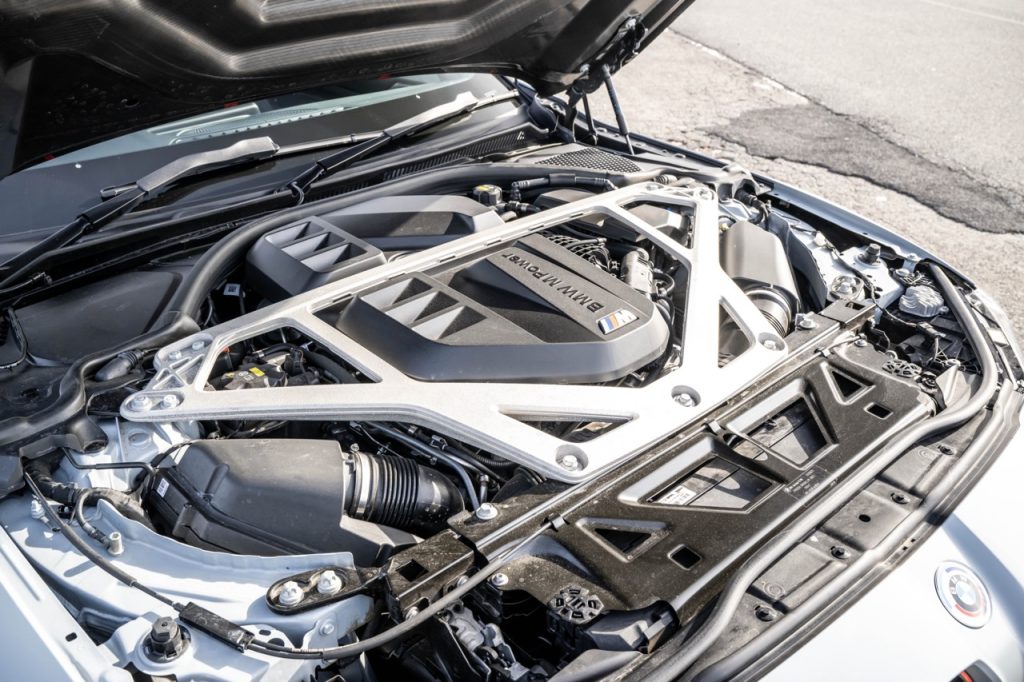
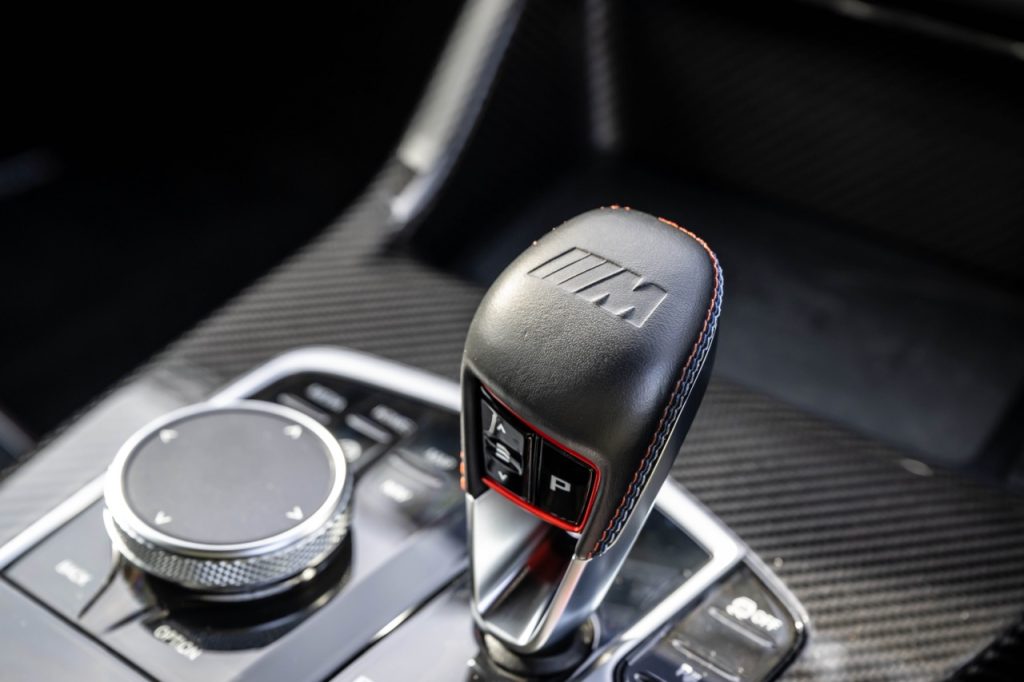
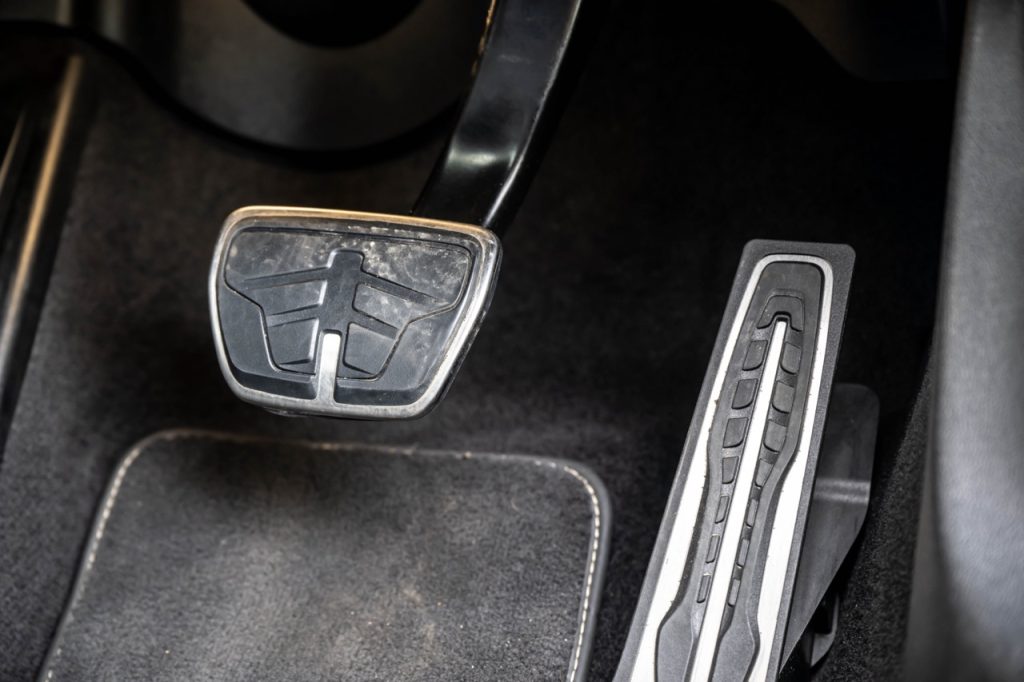
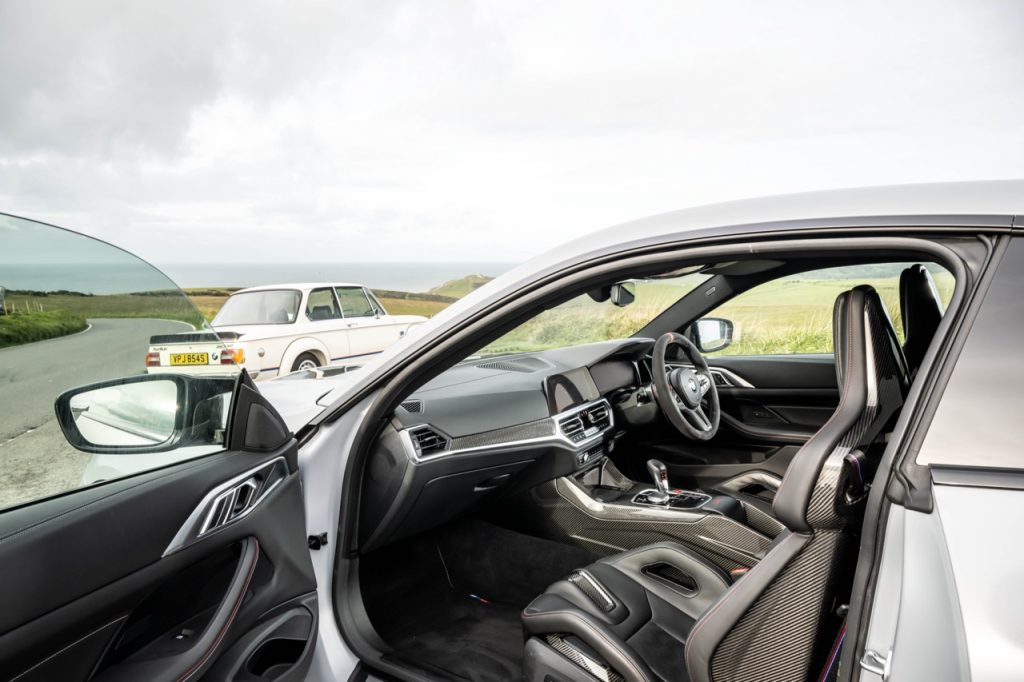
The 542bhp quoted power output of the engine has been shown to be conservative, and independent track tests have delivered some frankly astonishing stats for pub bores. No doubt about it, this car is fast – with a loud, expletive F. American magazine Car and Driver clocked a 0–60mph time of 3.3 seconds, which is a hell of a run for a front-engined, rear-wheel-drive layout. But there’s more to come. Because once those rear tyres find traction the M4 CSL gets going like Concorde hitting Mach 2.0. It can reach 100mph in 6.9 seconds, 120mph flashes by in 9.5 seconds, and 150mph comes and goes in 15.4.
The fact that its top speed is pegged back by an electronic limiter as the needle sweeps to 191mph, still with a good few hundred revs to run, indicates this is a 200mph car. Video reviews filmed on derestricted autobahns in German suggest as much too.
Those same independent track tests highlight how the M4 CSL can be a wild ride when driven to its limits. When Hagerty’s own Jason Cammisa tasked Randy Pobst, a professional racing driver, with setting hot laps in a CSL, a Porsche 911 GT3 RS, and a Chevrolet Corvette Z06, the CSL proved a handful.
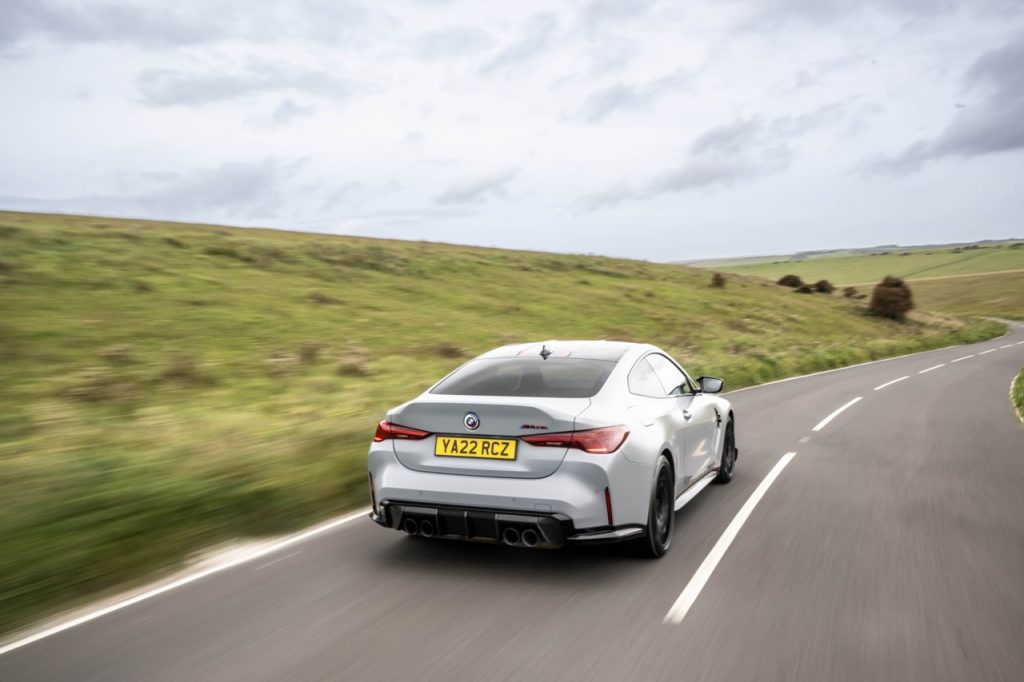
That pretty much defines the car’s behaviour on the public road. The rear wheels alone have the job of handling one of the most muscular engines in a modern performance car, and it shows: third and fourth gear bursts of acceleration have the back of the car squirming around, and that’s on a dry surface. Find an open, well-sighted corner, disable the traction control and the CSL doesn’t need much encouragement to swing its tail.
Happily, it isn’t as intimidating as it could be, in part because of the effectiveness of the electronic stability control and locking differential. Also helping is the steering, which offers outstanding precision and just enough feedback to encourage you to explore the car’s abilities rather than fear them.
The six-cylinder engine is no melodic masterpiece, but its reaction time and firepower continually leave the driver in awe, as do the brakes, which are more than up to the task of managing the CSL’s prodigious pace. If only the same could be said of the eight-speed, M Steptronic automatic gearbox; despite the shift patterns being specific to the CSL, it feels a bit second rate compared with the best dual-clutch gearboxes.
As for the rest of the package, a CSL enjoys the same creature comforts an M4 gets, but is that bit louder to live with day to day. Around 15 kilos of sound insulation material has been binned, there are carbon-fibre reinforced plastic panels (like the BMW i3 and i8), a titanium exhaust, no rear seats or belts, fixed-back carbon front seats, and lighter wheels with carbon-ceramic brakes. In all, it is 100kg lighter than an M4 Competition. Much of this plays out in the way the car sounds and feels just a bit more raw and alert than its sibling.
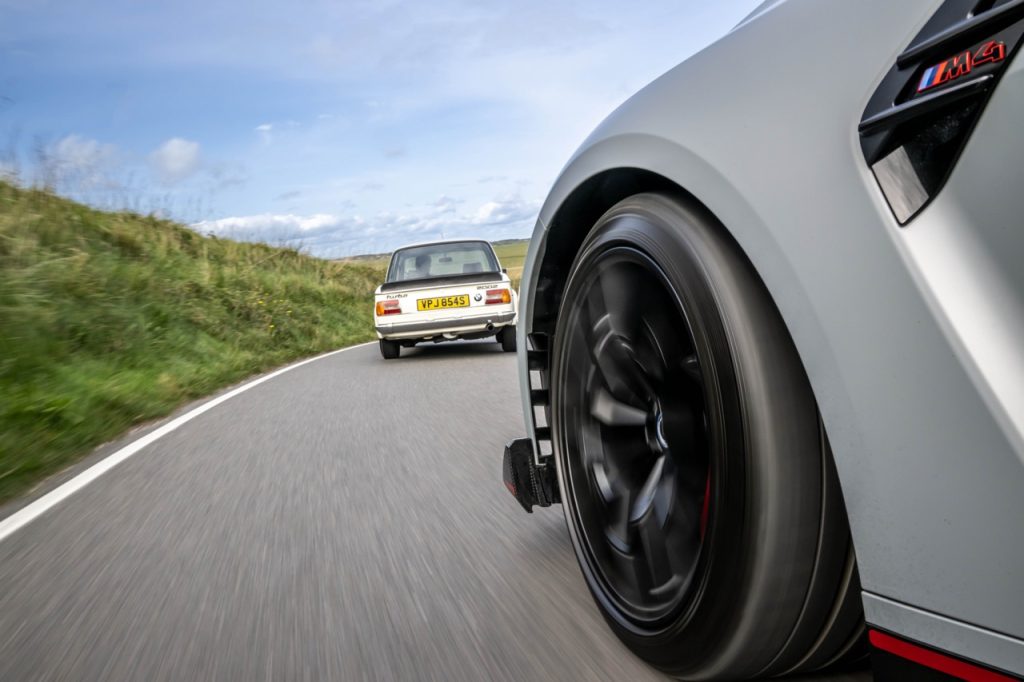
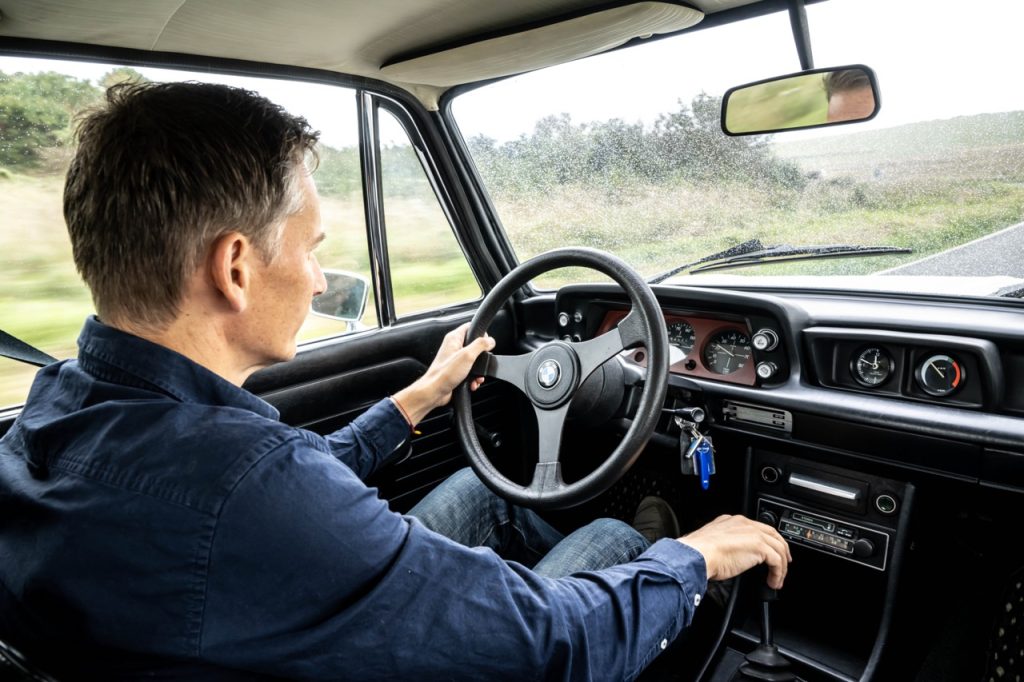
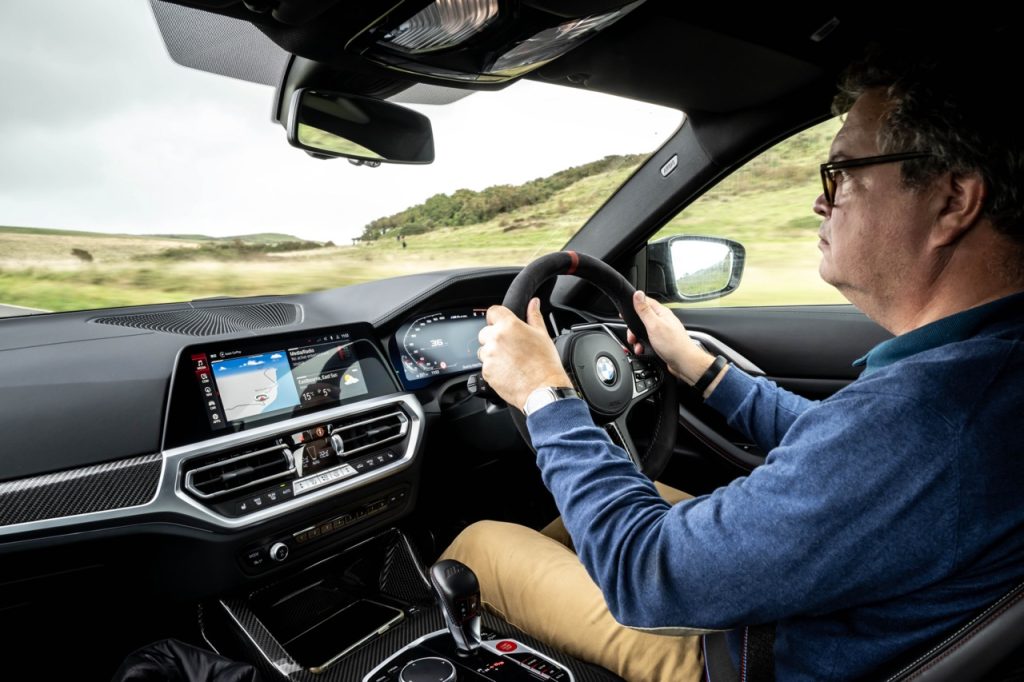
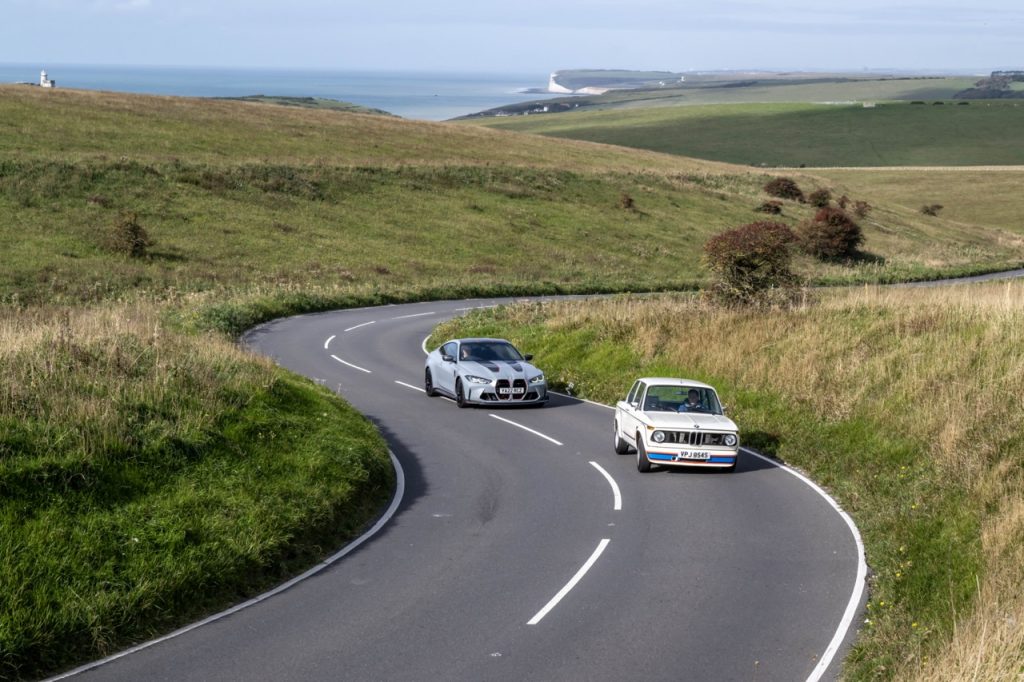
What’s surprising is how there are similarities in the capabilities of the 2002 Turbo and M4 CSL. Though the whistle is somewhat dulled, as with the 2002 the rush of turbo-propelled performance remains the CSL’s defining feature. And what a rush it is. Once again there is a sense that all that power and torque presents a challenge to the chassis, and the driver, to manage. But some might argue a turbocharged M car that didn’t keep you on your toes would make for a duller drive. The very fact it is pushing at the boundaries, just as the 2002 Turbo did 50 years ago, may make the CSL all the more appealing.
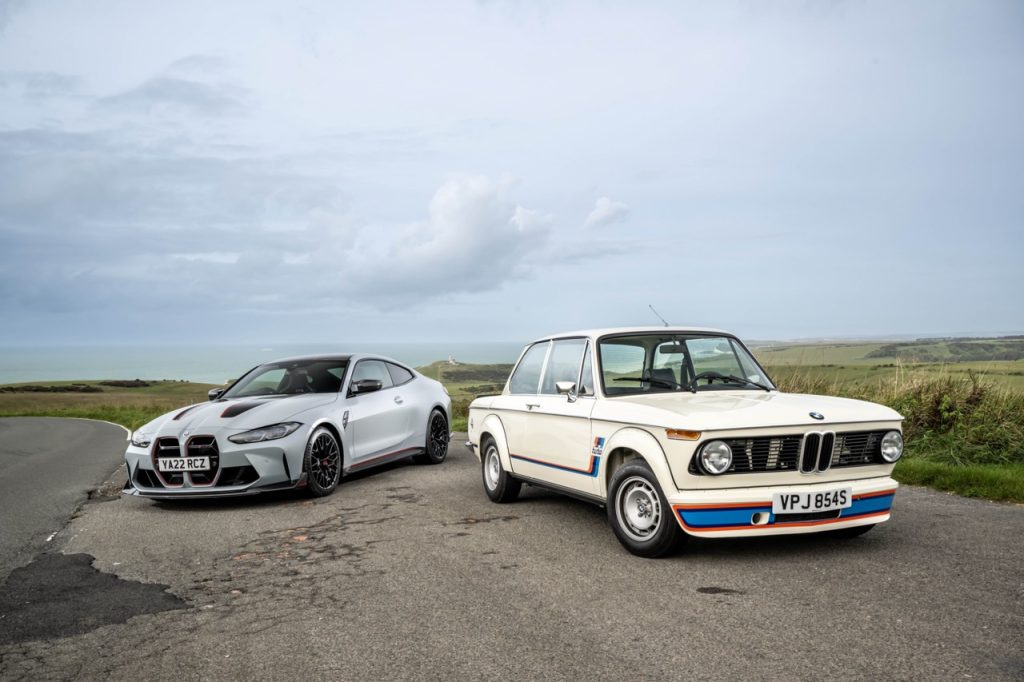
Specs: BMW 2002 Turbo & M4 CSL
Price new: £4221; £128,820
Price now: £72,000 – £143,000; £99,000 – £145,000
Number built: 1672; 1000
Estimated UK cars: 40; 100
Powertrain: 1990cc 4-cylinder turbo, 5-speed manual ; 2993cc straight-six twin turbo, 8-speed auto
Power: 168bhp @ 5800rpm; 543bhp @ 6250rpm
Torque: 177lb ft @ 4000rpm; 479Ib ft @ 2750rpm
0–60mph: 6.9 sec; 3.5 sec
Top speed: 131mph; 191mph
Fuel economy: 21.7mpg; 28.2mpg
CO2 emissions: n/a; 225g/km
Buying a 2002 Turbo
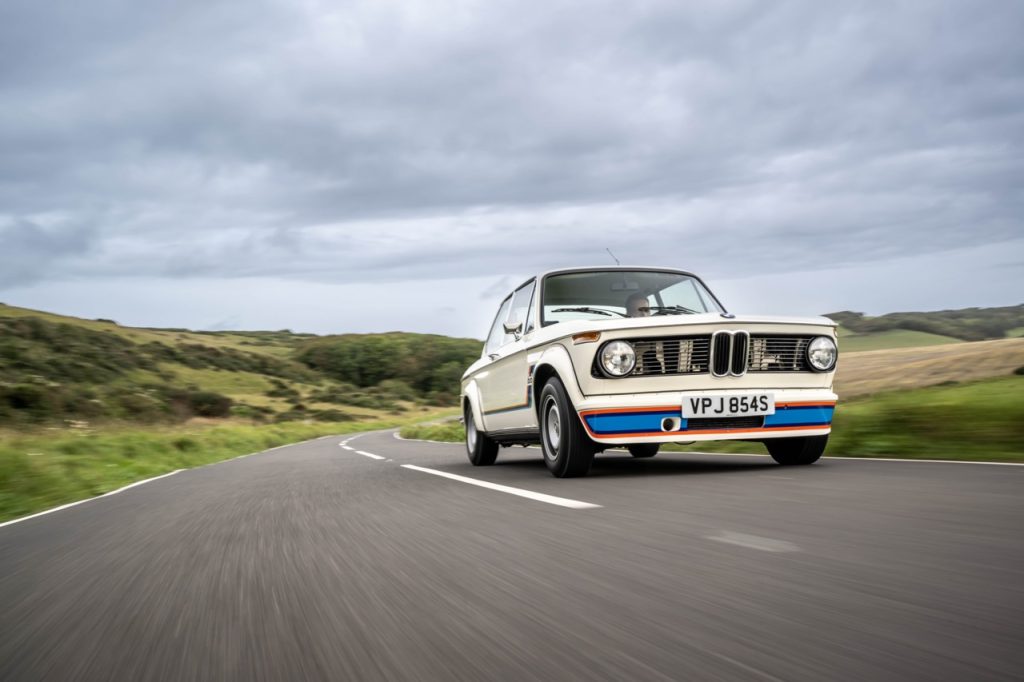
The 2002 Turbo was built around emerging technology, so it should come as no surprise that they can be temperamental things from time to time, says Barney Halse, the man behind Classic Heroes, a specialist in classic cars of the modern era, who has a wealth of experience with BMWs from the 1970s on.
“The first thing when looking to acquire a 2002 Turbo is to buy the very best you can find. It is always cheaper in the long run to buy the best. You also need to look very carefully at the car’s history; it needs to have an etched-in-stone history file that you can genuinely trace back three decades if not further.”
Halse explains that, in the late 1980s, it was possible to buy a 2002 Turbo for around £4000. “They fell into the wrong hands and had a very, very hard life. They lived outdoors and may have been driven daily, through all weathers and with salt on the roads. Then they would be restored to a standard that represented the value of the car. They were patched, plated, welded up.”
It’s a common theme in the classic car world, one you could have applied to something like an Aston Martin DB5 once upon a time. If a 2002 Turbo has not had a proper, high-end restoration within the last decade, Halse says it will more likely than not require a restoration done to a standard that represents the near-six figure value people are trying to achieve today.
“There was a huge amount of Hanky Panky with Turbos,” he cautions. Rusty cars could have been reshelled using standard 2002 donor shells that mean a car no longer has a prized set of matching numbers. “If you can buy from a long-term owner, or someone like me who has known the car and its history for decades, you can be confident that it is what it’s claimed to be.”
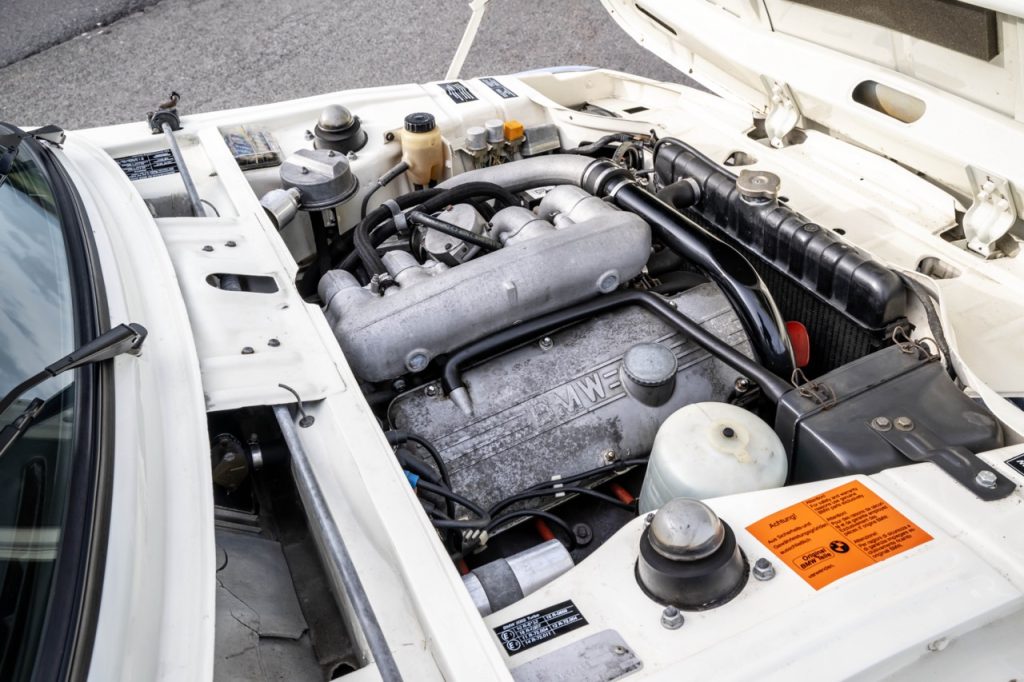
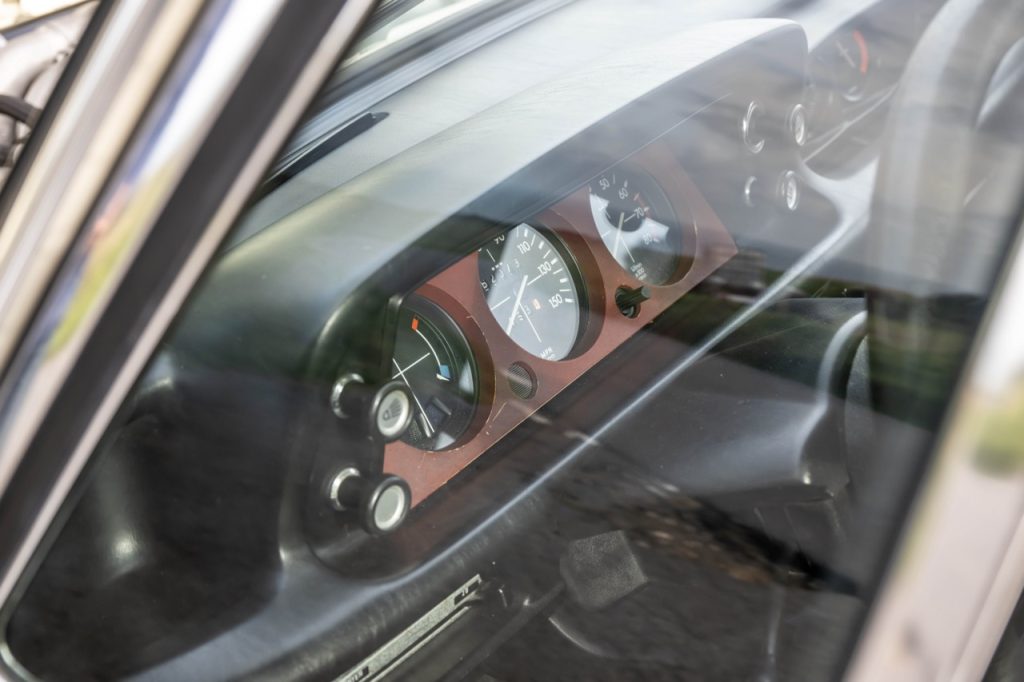
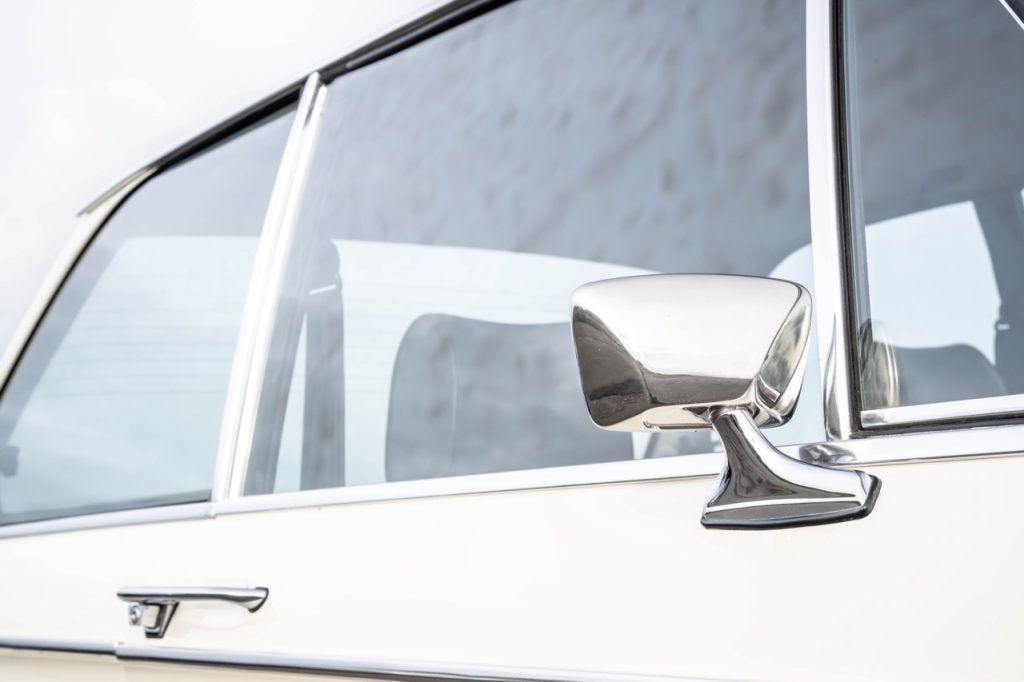
Mechanically, the combination of the Kugelfischer mechanical fuel injection pump and turbocharger is something of a dark art to get running smoothly, says Halse. “Who the hell is going to know about Kugelfischer unless they’ve been working on it for a very, very long. The issue is that when setting up the turbo, if you get the technical data out and follow it like a textbook it won’t run right. It’s a feel thing. You have to fettle it, you have to set up each one slightly differently – the ignition timing, the dwell angle, everything, you’ve set it all up, and you tweak it and get that individual turret turbo running beautifully.”
All Turbos will need an engine rebuild if it hasn’t already been done, says Halse. “There will be smoking, cylinder head problems, turbo studs, exhaust manifold studs – all this and more will likely need attending to.”
To fully restore a 2002 Turbo today would probably cost in the region of £100,000, which is about the same value as a fully restored model on the market, so this is why it pays to know about a car and buy the best you can.
The Turbo is “…ever such an exciting, useable car,” Halse says. “There’s no question a five-speed is slightly easier to drive quickly,” he adds, based on his experience behind the wheel of both. “The five-speed ‘box was a bloody expensive option. But my advice is not to get too bogged down with the spec that you want. Buy it on its history file, guaranteeing that the car has a long chain of owners so that you can trace its originality and life back to the beginning.”
















